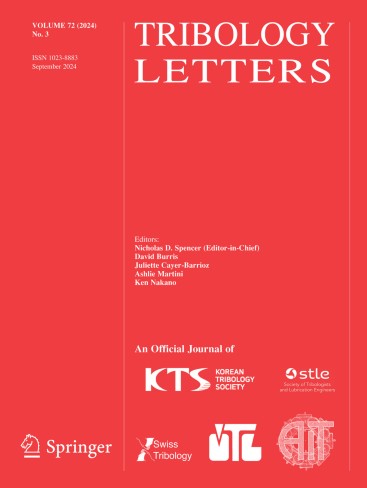Influence of the Crystallinity on the Tribological Behavior of MoS2 Nanoparticles Stabilized by a Succinimide Dispersant
Abstract
This study investigates the influence of the crystallinity of MoS2 nanoparticles on their tribological performance, when used as lubricant additives in presence of a succinimide-based dispersant. Friction tests were conducted at room temperature and 100 °C. Characterization techniques, such as TEM, XPS, TGA, and DLS were used to analyze the structural and chemical properties of the nanoparticles and the tribofilms formed during the friction tests. At room temperature, low crystallinity nanoparticles show superior friction reduction due to their structural defects which facilitate their exfoliation and make easier dispersant adsorption and effective nanoparticle interaction with surfaces. Higher friction coefficients are obtained with the high crystallinity nanoparticles. This is attributed to a less easy exfoliation of the nanoparticles together with greater difficulty for the dispersant to interact with closed-structure nanoparticles. The tribofilm is thicker with high crystallinity particles and made of exfoliated MoS2 sheets together with intact nanoparticles. At 100 °C, the friction performance of both nanoparticles are similar and very good as the dispersant looks to desorb from the rubbing surfaces, highlighting the significant impact of temperature on dispersant behavior and friction reduction. These findings underline the importance of tailoring lubricant formulations to both the crystallinity of MoS2 nanoparticles and the operating conditions in order to optimize tribological performance.

 求助内容:
求助内容: 应助结果提醒方式:
应助结果提醒方式:


